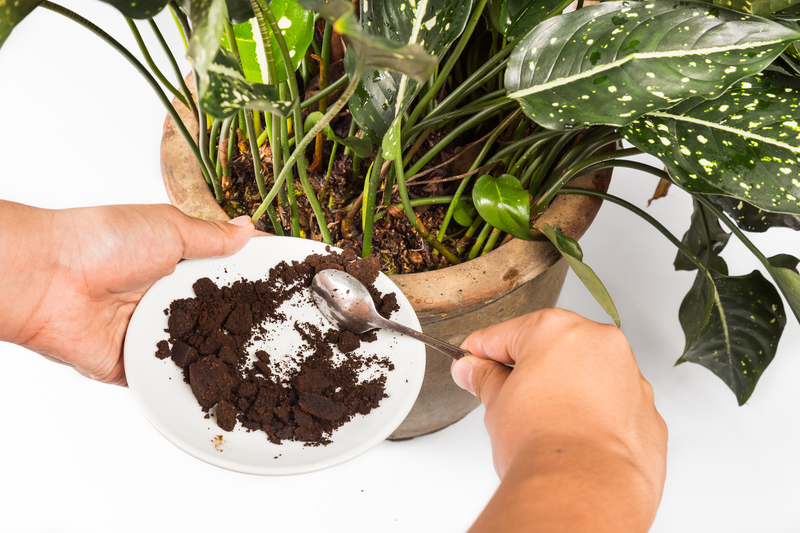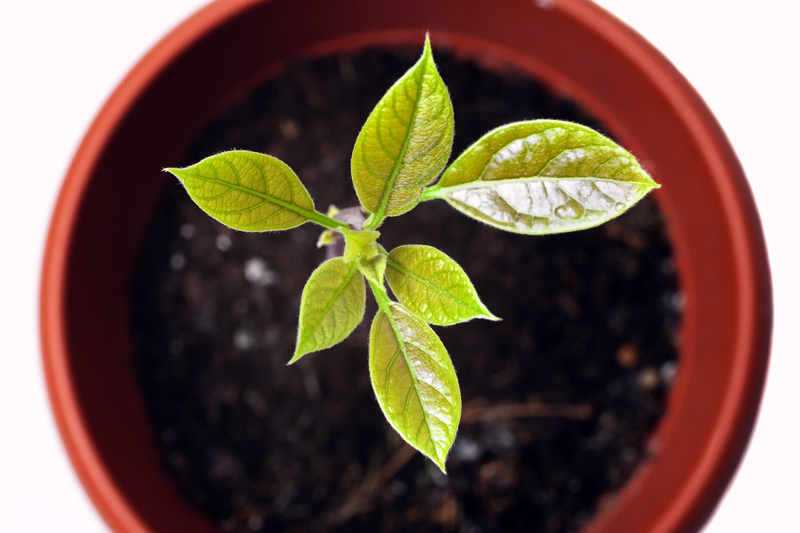Crafting a Culinary Herb Wonderland
Posted on 25/05/2025
Crafting a Culinary Herb Wonderland: An In-Depth Guide
Dreaming of stepping into your own magical world brimming with fragrant, flavorful herbs? Crafting a culinary herb wonderland isn't just for seasoned gardeners or professional chefs. With careful planning, the right knowledge, and a bit of creativity, anyone can cultivate a lush and productive space dedicated to aromatic, edible herbs. Whether you have a spacious backyard, a small terrace, or just a windowsill, this comprehensive guide will walk you through the steps to create your own herb wonderland that elevates both your cooking and your living space.

Why Create a Culinary Herb Wonderland?
The benefits of growing your own culinary herbs extend far beyond the kitchen. From improving your meals with vibrant flavors to attracting pollinators, purifying the air, and boosting wellbeing, a personal herb haven delivers countless rewards:
- Fresh Flavors at Your Fingertips: Harvest herbs as needed and enjoy peak taste and nutrition.
- Cost Savings: Growing your own means less money spent on store-bought, packaged herbs.
- Healthier Living: Many herbs offer medicinal properties, antioxidants, and vitamins.
- Eco-Friendly: Home-grown herbs cut down on packaging waste and reduce food miles.
- Personal Enjoyment: A lush herb garden enriches your living environment and is a joy to nurture.
Planning Your Herb Wonderland
Before you start planting, thoughtful planning will set your herb garden up for success. Here's how you can design your herb wonderland with beauty, function, and longevity in mind:
1. Select the Right Location
- Sunlight: Most culinary herbs need at least 6-8 hours of direct sunlight per day. Consider a south-facing windowsill, balcony, or spot in your yard.
- Space: Size doesn't matter! From vertical gardens to raised beds, hanging baskets to kitchen windows, choose a location that fits your available space.
- Accessibility: Position your culinary herb wonderland near the kitchen for quick, easy harvests.
2. Choosing Your Herbs
Select herbs that you enjoy eating, and that thrive in your climate. Here's a quick list of popular culinary herbs for any home garden:
- Basil - Sweet, aromatic, perfect for Italian and Southeast Asian dishes.
- Parsley - Curly or flat-leaf, great for garnishes, salads, and sauces.
- Cilantro/Coriander - Essential for Latin American, Mexican, and Asian cuisines.
- Rosemary - Woody, evergreen, pairs beautifully with roasted meats and vegetables.
- Thyme - Delicate leaves with a robust, earthy flavor.
- Sage - Velvety leaves ideal for stuffings, meats, and autumn recipes.
- Oregano - Pungent and versatile, a must for Mediterranean cooking.
- Mint - Refreshing, great for teas, desserts, and savory dishes.
- Dill - Feathery and flavorful, used in pickling, salads, and seafood.
- Chives - Mild onion flavor, perfect fresh or as a garnish.
*Pro Tip: Start with 3-5 herbs that you use most often in your kitchen. Expand as your confidence grows.*
3. Designing for Beauty and Function
- Mixed Planting: Combine trailing herbs (like thyme) with upright varieties (like basil) for visual interest.
- Color and Texture: Intermix herbs with varied leaf colors and shapes for a lush, vibrant look.
- Companion Planting: Plant herbs together that benefit each other (e.g., basil near tomatoes).
- Pathways and Features: Incorporate stepping stones, trellises, or seating to invite exploration.
Soil, Water, and Care for Your Culinary Herb Wonderland
Soil Preparation
Healthy soil is the foundation of a thriving herb garden. Herbs generally prefer well-drained, nutrient-rich soil. Here are the essentials:
- Drainage: If planting in-ground, amend heavy clay soil with compost and sand. For containers, choose pots with holes and use high-quality potting mix.
- Organic Matter: Mix in compost or well-rotted manure to boost fertility.
- pH Level: Most culinary herbs are happiest in slightly acidic to neutral soil (pH 6.0-7.0).
Watering Wisely
Overwatering is a common mistake in herb gardening. Most herbs prefer consistent moisture, but not soggy roots. Here's how to water your herbal paradise just right:
- Water deeply when the top inch of soil feels dry.
- Avoid overhead watering to prevent fungal diseases--water at the base of the plants.
- Mulch lightly to retain moisture and suppress weeds.
Fertilizing Fundamentals
- Less is More: Herbs don't need heavy feeding. Over-fertilizing can reduce flavor intensity.
- Organic Options: Use compost tea or a balanced organic fertilizer once or twice each season.
How to Maximize Harvests in Your Culinary Herb Wonderland
Regular Harvesting
- Pinch, Don't Pluck: Use sharp scissors to trim stems, which encourages bushier plant growth.
- Harvest Early: Pick herbs in the morning after dew dries for best flavor.
- Don't Overharvest: Never remove more than a third of the plant at one time to avoid stress.
Pruning and Maintenance
- Deadheading: Remove flower buds to extend the leaf-producing season (unless you want seeds or edible flowers).
- Weeding: Keep your herb beds tidy so plants don't compete for nutrients.
- Rotate Crops: Give perennial herbs a trim in late winter or early spring to keep them vigorous.
Creating Themed Herb Gardens
Crafting a culinary herb wonderland can be as creative as you wish. Personalizing your garden around a theme adds purpose and charm:
1. Mediterranean Herb Garden
- Featuring: Rosemary, oregano, thyme, sage, basil, marjoram, lavender
- Design tips: Use gravel mulch, terracotta pots, and sun-soaked locations.
2. Tea Herb Wonderland
- Featuring: Mint, chamomile, lemon balm, bergamot, anise hyssop
- Design tips: Dedicate a bed or pots just for tea herbs to enjoy homegrown infusions year-round.
3. Pizza or Pasta Herb Patch
- Featuring: Basil, oregano, parsley, thyme, garlic chives
- Design tips: Locate near your patio or barbecue area for easy access during outdoor cooking.
4. Container and Indoor Herb Gardens
No outside space? You can still craft a culinary herb wonderland indoors. Container gardening lets you grow herbs in pots on windowsills, balconies, or under grow lights.
- Choose deep, well-draining containers.
- Group herbs with similar water and light needs together.
- Rotate pots regularly to keep plants growing straight.
Incorporating Herbs Into Everyday Life
One joy of an herbaceous wonderland is the ability to infuse freshness into every meal and moment. Explore these creative suggestions for using your own homegrown herbs:
- Cooking: Elevate soups, salads, roasts, sauces, and baked goods.
- Herb Butters and Oils: Infuse olive oil or blend soft butter with chopped herbs.
- Drinks: Add mint, basil, or lemon balm to water, cocktails, or teas.
- Preserving: Dry, freeze, or make pesto to enjoy garden herbs all year long.
- Health and Wellbeing: Enjoy herbal teas, bath sachets, or simple remedies for daily wellness.
- Decor: Use fresh herb bundles as fragrant table accents or for homemade wreaths.
Troubleshooting Common Herb Garden Problems
Even the most magical herb gardens face occasional setbacks. Here's how to keep your herbal wonderland healthy and productive:
- Pests: Pick off insects by hand, use insecticidal soap, or plant pest-repelling herbs like basil and mint.
- Diseases: Ensure good air circulation, water at the base, and avoid overcrowding.
- Leggy Growth: Provide more sunlight and prune herbs frequently to maintain compact growth.
- Yellowing Leaves: Check for overwatering, poor drainage, or nutrient deficiencies.
Seasonal Care and Expansion
Your culinary herb utopia changes with the seasons. Here's how to keep it thriving year-round:
Spring
- Start new seeds indoors or outdoors as weather warms.
- Divide and transplant overwintered perennial herbs.
Summer
- Harvest regularly for best flavor and bushy growth.
- Maintain even watering, especially during heat waves.
Autumn
- Dry or freeze herbs before frost arrives.
- Bring sensitive herbs indoors or cover with frost cloth.
Winter
- Grow hardy herbs like thyme and sage outdoors; nurture tender herbs on sunny windowsills.
- Feed perennial herbs lightly and prune as needed in late winter.

Inspiring Ideas for Expanding Your Herb Wonderland
- Vertical Herbaria: Install wall-mounted planters or pallet gardens for space-saving growth.
- Living Fences: Use tall, shrubby herbs like rosemary or lavender as edible borders.
- Themed Paths: Line walkways with low-growing herbs (e.g., thyme or oregano) for fragrant footsteps.
- Edible Ornamentals: Mix herbs with flowers for a truly enchanting and functional garden.
Your Culinary Herb Wonderland Awaits!
Creating your own culinary herb wonderland is both rewarding and empowering. It connects you with nature, enhances your health, and elevates every meal you prepare. Whether you're a gardening novice or a skilled green thumb, these herb garden strategies will guide you from planning to harvest and beyond.
Start small or dream big--the journey to your own herbaceous paradise can begin today. Happy gardening!

